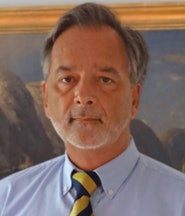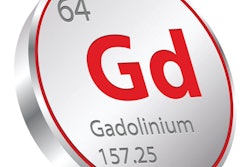
During the last two months, radiologists in Germany and beyond have been confronted with several newspaper articles about MR contrast agents and their factual and imagined side effects.
For instance, the author of an article in the German daily Die Welt follows the old leitmotif of the yellow press that sensationalism sells: Bad news is good news. The author's attempt to pluck the readership's heartstrings is brilliant. The headline warns that "An MRI shot can be quite poisonous" and the article begins more like a crime novel:
The contrast medium gadolinium has made nurse Georg Wehr ill -- and he is not the only one ... Two years ago Georg Wehr was still working as a nurse. Then a patient fell, he tried to catch her, injuring an intervertebral disk and his hip. Four MRI exams followed ... Wehr received a gadolinium-containing contrast agent at each exam. "I wanted to get better and trusted the doctors," says Wehr. He has been unable to work since the accident -- also because the gadolinium has made him ill. Pure gadolinium metal is very toxic ...1
The entire article casts a lurid light on clinical MRI, as did a similar article in the same newspaper discussed in an earlier column.2 Unfortunately, after reading this article one is left in a state of confusion, not being able to distinguish which parts were important or how the described facts tie up. There is no detailed explanation in the paper. It just spreads uneasiness and fear.
 Dr. Peter Rinck, PhD, is a professor of diagnostic imaging and the president of the Council of the Round Table Foundation (TRTF) and European Magnetic Resonance Forum (EMRF).
Dr. Peter Rinck, PhD, is a professor of diagnostic imaging and the president of the Council of the Round Table Foundation (TRTF) and European Magnetic Resonance Forum (EMRF).I have written about science and the media last year -- the arguments have not changed at all.3 But a ray of sunshine in the gray mist is an article published by the Frankfurter Allgemeine Zeitung (FAZ) on the same topic. It sets an example and shows how the lay press can present difficult scientific or medical subjects.
The headline of the FAZ article is a little sensational, but the article itself is clean and well-researched, and its language is appropriate and understandable.4 Although it's a rehash of the story of the nurse mentioned six weeks earlier in Die Welt and the Chuck Norris story told in my last column,5 it has a solid foundation and even gives fitting references. It also cites the remarks and recommendations of well-known experts in the field. It is balanced and fair, and readers can draw their own conclusions.
Good science reporting depends on an informed and conscious grasp of scientific methods and outcomes. In its absence, questionable judgments can create or perpetuate obscure scientific perspectives. Lack of knowledge and critical attention to even marginal aspects of research easily slant a story.
A good example is another article in Die Welt. It revived a topic I focused on in a column some years ago. Its theme attracts readers like a cesspool attracts flies, because it's slightly voyeuristic: Publications from the University of Kiel in Germany claim that a simple functional MRI (fMRI) study can identify pedophiles with high accuracy. The authors stated: "The automatic classification of these [fMRI] patterns is a promising objective tool to clinically diagnose pedophilia."
The authors' claims are false and have to be actively countered as forcefully as possible. Years ago scientists demanded that the papers should be retracted.6 However, now you can read a friendly and encouraging review in Die Welt.7
If this newspaper article were one of the thousands, or tens of thousands, of meaningless scientific papers published in research journals, it would be less precarious. But the manipulation of public opinion by the lay press in matters scientific or on the physician-patient relationship is treacherous -- as is ruminating wrong results the journalist has not understood. The question that occurs to me after reading such articles is whether in some there is an underlying deeper motive than their simple, superficial contents hint.
This makes me think about an old tip for readers: Not everything that is printed is true, but it might be food for thought.
And, by the way, this is not only a problem for German newspapers. Others happily mix fact and fiction in science and elsewhere.
Dr. Peter Rinck, PhD, is a professor of diagnostic imaging and the president of the Council of the Round Table Foundation (TRTF) and European Magnetic Resonance Forum (EMRF). He has no financial interests to disclose.
References
- Dönisch A. Eine MRT-Aufnahme kann ziemlich giftig sein (An MRI shot can be quite poisonous). Die Welt. 28 February 2018:20.
- Rinck PA. Adding fuel to the flames: Gadolinium -- the German follow-up. Rinckside. 2016; 27(1):1-3.
- Rinck PA. Spreading the news: Science and the media. Rinckside. 2017;28(3):5-6.
- Witte F. Vergiftete Atmosphäre in der Röhre (Poisoned atmosphere in the tube). Frankfurter Allgemeine Zeitung, print edition, 11 April 2018:41.
- Rinck PA. Some side effects of the great gadolinium scare. Rinckside. 2018; 29(2):5-6.
- Jimenez F. Im Kopf der Pädophilen (In the head of pedophiles). Die Welt, print edition. 28 February 2018:20.
- Rinck PA. Functional charlatans. Rinckside. 2015;26(4):9-11.
The comments and observations expressed herein do not necessarily reflect the opinions of AuntMinnieEurope.com, nor should they be construed as an endorsement or admonishment of any particular vendor, analyst, industry consultant, or consulting group.



















